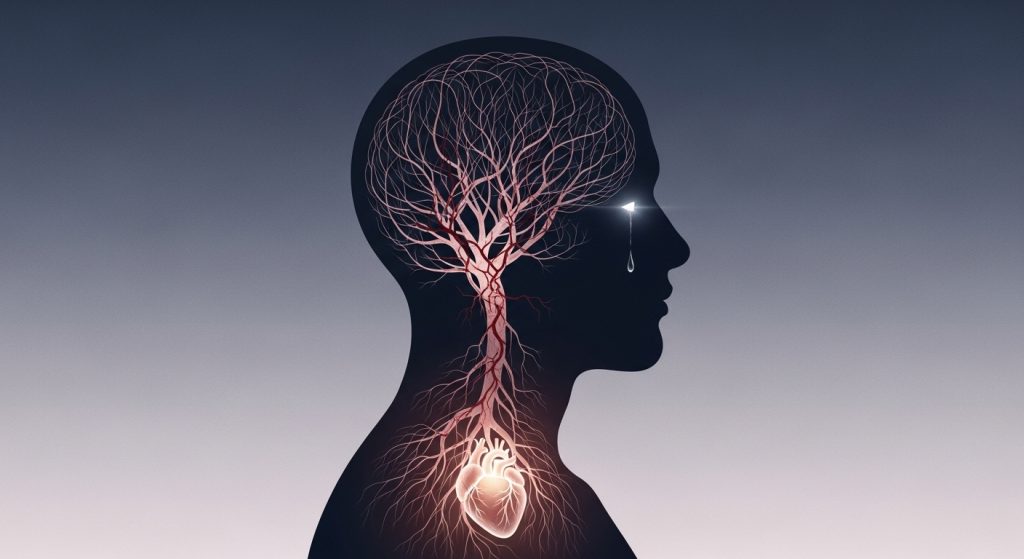When Trauma Lives in the Body
Imagine this: your shoulders are constantly tight, your stomach churns for no apparent reason, and your heart races when someone raises their voice even though the traumatic event that caused it happened years ago. For many, these physical reactions are confusing, frustrating, and isolating. You may wonder why your body continues to react long after the trauma is “supposedly over.
This raises an important question: does your body remember trauma? Trauma doesn’t just affect the mind; it leaves an imprint on the body, creating lasting physical, emotional, and behavioral responses. In this article, we’ll explore trauma and the body, explain why physical symptoms often linger, and provide practical strategies to support healing.
Understanding Trauma: More Than Just a Mental Experience
Trauma is defined as a deeply distressing or disturbing experience that overwhelms an individual’s ability to cope. It’s more than a mental or emotional event it can profoundly affect the body as well. Trauma can take multiple forms:
- Acute trauma: A single event, such as an accident or assault.
- Chronic trauma: Ongoing exposure to stressful situations, like abuse or neglect.
- Complex trauma: Multiple traumatic experiences, often starting in childhood, that impact development and attachment.
When trauma occurs, the brain and nervous system respond automatically. The fight, flight, or freeze response triggers a flood of stress hormones such as adrenaline and cortisol, preparing the body to survive immediate danger. While this response is adaptive in the moment, repeated or unresolved trauma can leave the body in a persistent state of alertness.
Understanding trauma’s effect on the mind sets the stage for recognizing its imprint on the body.
How Trauma Can Be Stored in the Body
The body has a remarkable way of “remembering” experiences, often beyond conscious awareness. This is called somatic memory, where sensations in muscles, posture, and organs reflect past traumatic experiences.
The autonomic nervous system (ANS) plays a key role in storing these responses. When trauma occurs, the body may remain in a heightened state of arousal even after the danger has passed. This can result in:
- Chronic muscular tension
- Posture changes
- Persistent pain
- Heightened reactivity to stress
Even when conscious memory fades or the mind suppresses painful recollections, the body may continue to react to cues associated with the trauma.
Common Physical Symptoms Linked to Trauma
Trauma can manifest in a wide array of physical symptoms, including:
- Muscle tightness or chronic pain: Often in the shoulders, neck, or back.
- Gastrointestinal issues: Digestive disturbances caused by stress-related hormones.
- Headaches, fatigue, and sleep disturbances: A result of constant stress and hyperarousal.
- Heightened startle responses or hypervigilance: Overreacting to minor triggers.
These symptoms often mirror unresolved emotional trauma and can persist even when the individual does not consciously recall the traumatic event.
Emotional and Behavioral Signs of Somatic Trauma
Beyond physical manifestations, trauma can influence emotions and behavior. Common signs include:
- Panic attacks or sudden anxiety triggered by reminders of trauma.
- Emotional numbness or dissociation, where one feels disconnected from reality.
- Difficulty regulating emotions or forming relationships, leading to social withdrawal.
- Compulsive behaviors that serve as coping mechanisms for unresolved tension in the body.
Recognizing these patterns is essential for understanding how trauma affects the whole person—not just the mind.
The Science Behind Trauma and the Body
Neuroscience supports the concept that trauma is both mental and physical. Research shows that trauma affects key areas of the brain:
- Amygdala: Heightened threat detection and fear responses.
- Hippocampus: Difficulty distinguishing past from present experiences.
- Prefrontal cortex: Impaired emotional regulation and decision-making.
Studies on somatic experiencing and body-centered therapies demonstrate that the body can retain trauma cues separate from conscious memory. Chronic stress from trauma also affects hormone regulation, increasing cortisol and adrenaline levels and perpetuating physical symptoms.
Techniques to Release Trauma Stored in the Body
Healing trauma involves addressing both the mind and the body. Effective techniques include:
- Somatic therapies: Practices such as yoga, somatic experiencing, and body scanning to release tension.
- Mindfulness and meditation: Bringing awareness to bodily sensations to reduce stress responses.
- Breathwork: Techniques to regulate the nervous system and promote relaxation.
- Movement therapies: Dance, martial arts, or gentle physical activity to help release stored tension.
Working with trained professionals ensures these practices are safe, effective, and tailored to individual needs.
Supporting Healing: Combining Mind and Body Approaches
For optimal recovery, trauma healing should integrate therapy, lifestyle adjustments, and social support:
- Therapy: Cognitive Behavioral Therapy (CBT) or trauma-focused therapy can address thought patterns and emotional responses.
- Lifestyle adjustments: Sleep hygiene, balanced nutrition, and gentle exercise support bodily regulation.
- Support networks: Friends, family, or peer support provide validation and safety.
- Self-compassion and patience: Recognizing that healing is a gradual process fosters long-term recovery.
Combining these approaches creates a holistic pathway to resilience.
Common Misconceptions About Body-Stored Trauma
Several myths can prevent people from seeking help:
- Myth 1: “If I don’t remember it, it’s not affecting me.”
- Myth 2: “Trauma only exists in the mind.”
- Myth 3: “Physical symptoms are unrelated to past experiences.”
The truth is that the body can retain trauma independently of conscious memory, and understanding the mind-body connection is essential for effective healing.
Conclusion — Your Body Remembers, and You Can Heal
Trauma leaves a lasting imprint on the body, influencing physical sensations, emotional responses, and behavior. Recognizing that your body remembers trauma is the first step toward recovery. Healing involves acknowledging both mind and body, using evidence-based therapies, lifestyle practices, and supportive relationships.
If you or someone you know struggles with trauma, consider exploring body-centered therapies, mindfulness practices, or professional mental health support. Small, consistent steps can create profound changes over time.
Thought-provoking question:
“What small practice can you begin today to reconnect with your body and release stored tension from past trauma?”
If you want to learn about mindful medication, visit the link!







